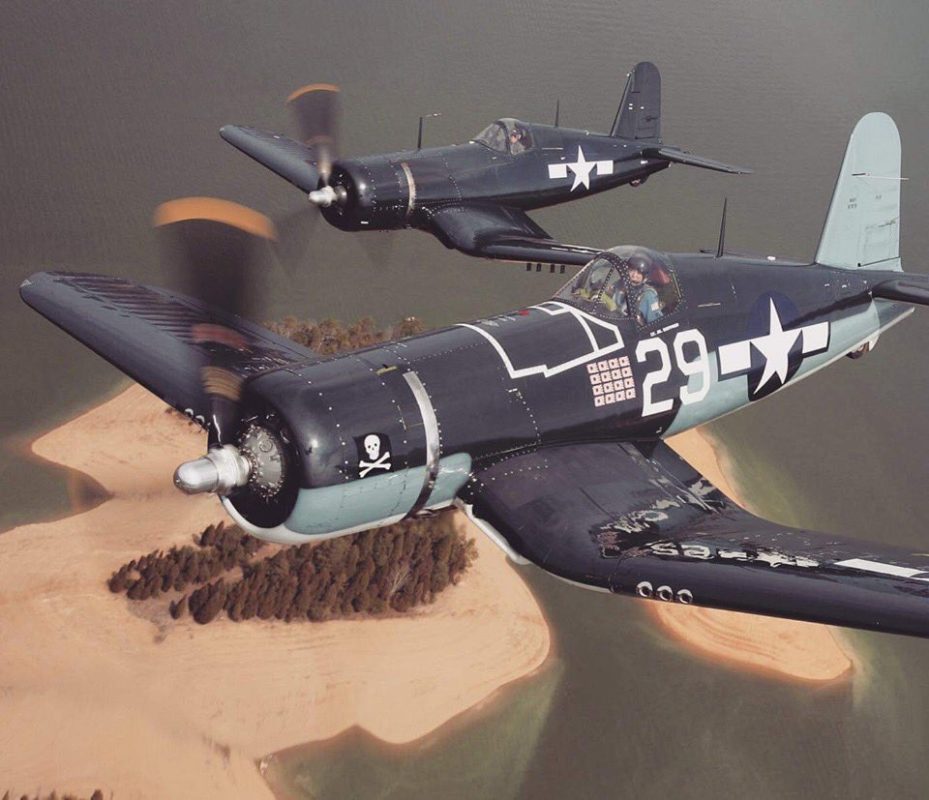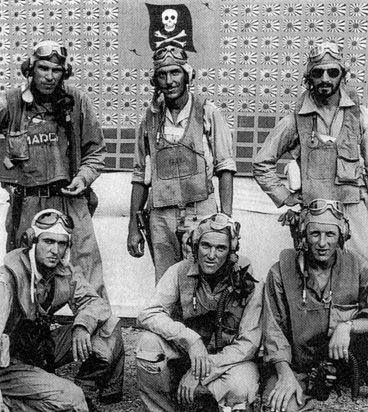Histoires aéro
Story of an ace: Ira “IKE” KEPFORD
LT Ira “IKE” KEPFORD
When we talk about the aces of the Second World War, the name of Lieutenant Ira “Ike” KEPFORD is not often mentioned in the first. He was however one of the best American aces with 16 victories.
Ira KEPFORD was rather destined for a career as a professional footballer. After high school, he was indeed talked about on the Northwestern University team. Sensing war was coming, he chose to enlist in November 1941, just a month before the Japanese attack on Pearl Harbour.
A year later, he obtained his pilot’s license and was assigned to VF 17 commanded by John Blackburn. The latter has remained in the history of aeronautics as the “boss” of the VF 17 at its creation, the one who had to choose the badge of his group: He wanted a badge capable of meeting 2 imperatives: referencing to the plane which was going to equip his unit, the CORSAIR but above all, to motivate his pilots: an example which serves as a reference for them to create the state of mind of the squadron: He chooses the “skull and crossbones” the flag of the pirates known as “Jolly Roger”.

The least we can say is that Blackburn succeeded in choosing his badge… his pilots were nicknamed a few months after the creation of the squadron the “Blackburn’s irregulars” in Norfolk: Among their feats of arms: One (Howard Burris) was hurtling very low in inverted flight on the highway causing a truck to go off the road, while Ira Kepford curled up in a dogfight very low over Norfolk against a P51 MUSTANG of the Army…
The General Staff decided to move them away from the city while preparing them for operations on aircraft carriers…
However, the recurring problems of the CORSAIR on aircraft carriers pushed the thinking heads of the Navy to assign the units which used it ashore rather than on a ship. The plane had a tendency to bounce on landing and the forward visibility was really bad for the pilots.

The Pacific Campaign
Thus “IKE” Kepford found himself on the Solomon Islands. The first war missions then began, made up of bomber escorts or patrols…without incident until November 1, 1943. Then begins the operation CHERRYBLOSSOM part of the terrible battle of the Solomon Islands. It is a question of taking back BOUGUAINVILLE held by the Japanese. VF 17 is regularly in contact with Japanese planes but never the Kepford section!

The missions follow one another between patrols and strafing of Japanese positions.
Kepford’s career as an ace really began on November 11: That day, 110 Japanese bombers and fighters led a terrible counter-offensive against American aircraft carriers. At 1 against 3, VF 17 fought for almost two hours. Kepford comes out of the battle with 4 victories… He received the NAVY CROSS for this day.
The rest of the campaign saw little confrontation with the enemy and patrol missions usually ended in straffing strafing before the group moved with the American advance to the base of Piva Yoke.
And “IKE” becomes an ace
A second very different campaign then begins. Each mission sees numerous engagements between enemy aircraft. January 27 Kepford acquires its ace status (from 5 planes shot down) by aligning 2 enemy planes.

On January 28, Ike Kepford shot down again 4 enemy planes that had come to intercept the bombers on which he was escorting. His score reached 10 planes fired.
On January 30 Kepford shoots down 2 more enemies but during a face-to-face crossing with the second, he hits him but his plane is also hit and he has to return with hydraulic problems. Its landing gear only comes out on one side. He destroys the plane on landing but emerges unscathed from the accident.
On February 3, during a B29 bomber escort mission, Kepford shot down another ZERO.
On February 19, returning alone after his teammate had returned to the field with a breakdown, Kepford saw a RUFE seaplane alone and vulnerable. He shoots it down easily but is chased by 4 Japanese hunters whom he tries to outrun. Cornered, he tries to fly as low as possible above the mountainous forests of the Solomon Islands. He manages to get away and one of the Japanese fighters crashes as he tries to field Kepford by knocking him inside a turn.
The VF17 was then demobilized on April 10, 1944 without the various missions carried out by Kepford giving rise to engagements with the Japanese.
Kepford is credited with 16 victories and the VF17 totals 154 aerial victories in 79 days of combat. Record that still stands.
Ira Kepford remained a Navy reservist until 1956. He became Managing Director of LIGGET DRUG CO. until his retirement in 1960.
He notably holds the Navy Cross, the Silver Star and the Distinguished Flying Cross as well as the Air Medal,



 Français
Français